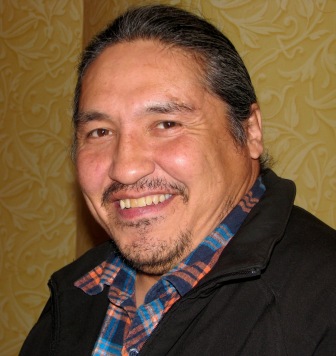By Jeremy Appel, Local Journalism Initiative Reporter
(ANNews) – First Nations chiefs in northwestern Alberta whose lands and waters were impacted by an Imperial Oil tailings pond spill that was concealed from them for months testified to a parliamentary committee on April 17, which was followed by testimony from Imperial Oil’s CEO.
Athabasca Chipewyan First Nation (ACFN), the band located closest to the Kearl mine from which the leak occurred, says the hearings raised more questions than answers.
In a statement, ACFN Chief Allan Adam contrasted the “heart-wrenching testimony” of Indigenous leaders with the “vague promises from Imperial officials.”
“What we do know is that the tailings ponds continue to leak, and oil executives and government officials continue to spin tails,” Adam said.
Suggesting a lack of faith in the provincial government and industry, the ACFN is calling on the federal government to assume control over the “management and cleanup of the environmental disaster.”
There were two leaks from the Kearl mine. The first occurred in May 2022, with the discovery of discoloured water near the mine, which the surrounding First Nations weren’t informed of until February 2023.
By the time they were informed, there was a second release of 5.3 million litres of contaminated water.
On April 19, Imperial Oil CEO Brad Corson testified to the House of Commons environment and sustainability committee, where he admitted the company doesn’t know how much tailings-tainted water has leaked into the environment.
He failed to explain why the company didn’t immediately inform the surrounding Indigenous communities.
“We have never been trying to hide any information. We were negligent in not sharing information,” Corson said in response to questioning from Edmonton-Strathcona NDP MP Heather McPherson.
The following day, Environmental Defence Canada (EDC) and Keepers of the Water held a demonstration on Parliament Hill in support of the impact nations.
Keepers of the Water spokesperson Tori Cress called the rally “a necessary act of resistance and of solidarity.”
“Water is sacred. It’s our lifeblood. A lifeforce that is a sacred element in many Indigenous Peoples cultures around the globe,” said Cress, who is Anishinaabe from G’Chimnissing.
“When companies like Imperial Oil recklessly pollute the waterways of Indigenous nations with toxic waste, they are not just threatening the environment, but also the very existence of the downstream communities.”
Aliénor Rougeot, EDC’s climate and energy program manager, said Imperial Oil’s irresponsible management of its “toxic industrial waste” has placed Indigenous Peoples, “who are already subjected to constant industrial pollution, at further risk.”
”The federal government has been a passive bystander for too long. We demand they use their full powers to hold Imperial Oil accountable and to prevent any more toxins from tar sands mines from reaching the environment,” Rougeot added.
Jean LHommecourt, a Denesuline woman who lives just outside of Fort McKay, said she’s concerned her moose harvest from this past year, which she’s already shared with members of the community, is tainted.
“Do I need to feel guilty or afraid that I have fed a contaminated animal to Elders and to loved ones? Now I have this fear of the long-term health effects that we are going to face,” said LHommecourt, who is Keepers of the Water’s co-chair.
Indigenous leaders who testified at the committee earlier in the week, including Chief Adam, noted the Alberta Energy Regulator’s (AER) role in the coverup, The Canadian Press reported.
Daniel McKay, chief of the Fort McKay First Nation, said the regulator “has zero credibility outside Calgary’s echo chamber.”
“They actively dismiss and downplay impacts of oilsands on communities and their aboriginal and Treaty rights.”
Adam, who shed tears at the hearing explaining what it was like to tell his people their water could be contaminated, went as far as to call for the AER to be dismantled entirely, adding that the federal government is also responsible for the leak.
Melody Lepine of the Mikisew Cree First Nation said federal and provincial governments have long ignored the nations’ calls for a detailed health study of Fort Chipewyan residents.
The six Indigenous leaders who testified agreed that the issue goes far deeper than a mere communication breakdown.
“There’s a question around the neutrality of the regulator in Alberta,” said Russell Noseworthy of the Fort McMurray Metis.
Timothy Clark of Fort McMurray Metis, added that the AER appears “more concerned about protecting the image of the industry and the investment than it is about protecting the health and rights of the people who live in this area.”
Prior to the hearing, federal Environment Minister Steven Guilbeault announced a new “notification and monitoring working group” to begin designing an enhanced reporting system for future leaks. It will be composed of representatives from federal and provincial governments, the Northwest Territories and Indigenous communities affected by the releases.
The ministry sent a letter to the nations in the area surrounding the Kearl mine to participate, although senior advisor Jennifer Lash noted that the working group’s scope goes beyond the one spill.
Alberta Environment and Parks spokesperson Miguel Racin insists the water in Lake Athabasca is safe for drinking, defending the government’s provincial communications regarding the leaks.
However, an independent sampling commissioned by the AER found that a small, fish-bearing lake, which feeds into a tributary of the Firebag River, contained toxins exceeding government guidelines.
AER CEO Laurie Pushor is set to testify at the committee on April 24.



Be the first to comment on "Commons testimony on Kearl leak raises questions: ACFN Chief"